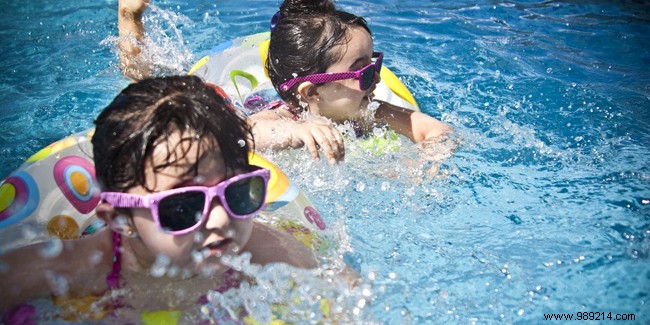
Having a private swimming pool in your garden is a real pleasure and a chance to be able to cool off in the summer, meet up with family or friends and spend pleasant and convivial moments! For these festive occasions to take place as well as possible and not to be thwarted by accidents, which can sometimes be very serious, it is very important to respect basic safety rules, some of which are made compulsory by law. Children are the first victims of drowning in private swimming pools in particular, but also of bodily accidents occurring in or near swimming pools. This is why vigilance and safety are even more important when welcoming children around your swimming pool. What rules should be observed to guarantee the maximum safety of children?
In order to limit accidents and drownings which particularly concern children, several laws (from 2004 and 2006) have established the obligation to equip private swimming pools buried and semi-buried with safety devices. Only inflatable or removable above-ground pools are not affected by these obligations. One more reason to be even more vigilant when children use this type of pool.
Owners of an in-ground or semi-in-ground swimming pool must therefore install one of the four proposed safety devices, which must themselves comply with very specific standards.
For safety reasons, it is therefore necessary to equip your swimming pool either with a protective barrier, a swimming pool cover, an alarm or a veranda-type shelter which completely covers the pool, whose security requirements are specified on the website of the Directorate General for Competition, Consumer Affairs and Fraud Prevention (DGCCRF).
Failing this, not only are the risks of drowning, in particular of children, greater, but the owners of a swimming pool who do not comply with these safety obligations incur criminal penalties, including a fine of 45,000 euros.
Ensuring that your children learn to swim as early as possible (from the age of 4) is a very important guarantee of safety, especially when you have a swimming pool at home. But even this common sense precaution should not make us forget that it is imperative to observe certain basic safety rules.
The first of the safety rules to observe when you have a private swimming pool and when children come to bathe in it in particular, is to never leave them alone. But, even if you stay near your swimming pool in the presence of children, it is just as important to remain vigilant and not to take your eyes off them, not to be absent even for a short time. Constant monitoring is necessary. “A child can drown in less than 3 minutes in 20 cm of water without a sound “, as recalled by the General Directorate of Urban Planning, Housing and Construction. And a safety device is never a substitute for adult vigilance.
It is therefore recommended, especially when children are bathing, not to engage in an activity that can monopolize your attention, even for a few minutes. In this sense, beware of cell phones that can quickly divert your attention!
Ideally, when your children bathe, you should also bathe at the same time. The best way to avoid accidents and react as quickly as possible when needed.
Designating a single adult to be responsible for supervising children is also a good idea.
Finally, when swimming time is over, make sure that your pool is no longer accessible to children and restart the safety devices (alarm, barrier, etc.). In addition, be sure to remove all objects floating in your pool (toys, buoys, mattresses, etc.) that could attract children.
Another way to make children's swims and their games near a swimming pool as safe as possible is to equip them with a buoy (suitable), armbands, or even a swimsuit fitted with floats, especially if they can't swim.
On the other hand, to be ready to react very quickly in the event of an accident or drowning, it is also important to think about having certain equipment near your swimming pool such as a pole or a buoy for example.
Also remember to always have a telephone at hand and the emergency and rescue numbers to call in case of need.